It looks like you're using an Ad Blocker.
Please white-list or disable AboveTopSecret.com in your ad-blocking tool.
Thank you.
Some features of ATS will be disabled while you continue to use an ad-blocker.
share:
The Mysterious Glozel Artifacts are an interesting case in archeology that has yet to be discussed on ATS. While generally being branded a hoax, the
artifacts have been shown to be of some importance to archeology, although the find could have been faked by placing artifacts of varying ages to
create a discovery that wasn't what it was claimed to be.
Please read through the story, as well as the links provided, and see what you think. Was this an elaborate hoax? Was this a case of archeology supressing evidence that went against the grain?
To say the least, the Glozel Affair is an interesting story, and the yet to be deciphered script found on the tablets may hold some historical importance if authentic.
www.glozel.net...
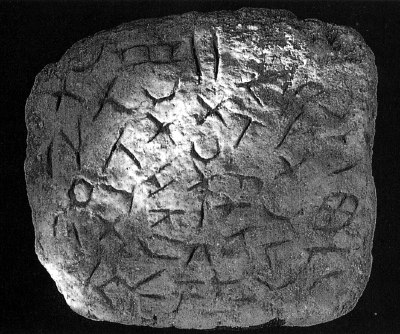

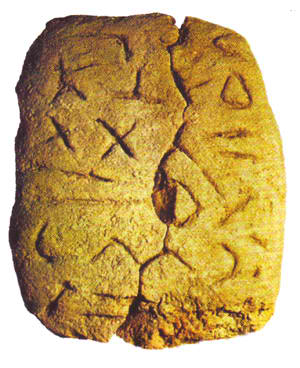
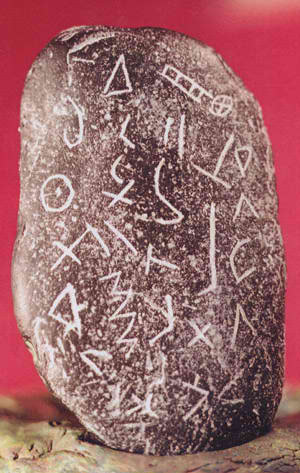

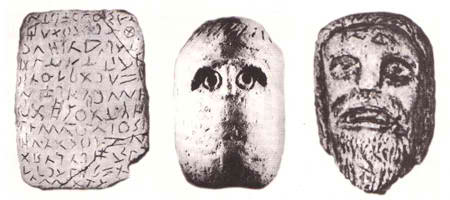
www.museumofhoaxes.com...
listverse.com...
www.philipcoppens.com...
www.bibliotecapleyades.net...
en.wikipedia.org...
www.atlantisquest.com...
Please read through the story, as well as the links provided, and see what you think. Was this an elaborate hoax? Was this a case of archeology supressing evidence that went against the grain?
To say the least, the Glozel Affair is an interesting story, and the yet to be deciphered script found on the tablets may hold some historical importance if authentic.
www.glozel.net...
A Short History of the Glozel Affair
The Glozel affair began on March 1, 1924. Seventeen-year-old Emile Fradin, his father, his sister Yvonne and his grandfather had gone down the hill to begin clearing the Duranthon field. Emile was holding the handles of the plow when one of the cows pulling it put her foot into a hole. In freeing the cow's foot, they uncovered a cavity with inner walls made of clay bricks and a floor of 16 clay tiles. In the cavity were a few human bones, including a skull, several crude ceramic vases, and other ceramic fragments. The diggers were fascinated by their discovery. They continued to work for a whole week, finding other things: three bricks bearing handprints, a small broken stone axe, stones engraved with strange signs and a kind of bone needle. Their finds were brought up to the farm and laid out on a workbench.
After Adrienne Picandet, a local teacher, visited the farm later in March, she informed the Minister of Education about the discoveries at Glozel. On July 9 Benoit Clément, another local teacher, came as a representative of the Societé d'Emulation du Bourbonnais. After examining the artifacts and doing a little excavation, Clément returned on July 28 with Miss Picandet and a man named Viple. Clément and Viple used pickaxes to break down the remains of the walls around the tomb, which they carried away. Two weeks later Emile received a letter from Viple saying that the objects were simply Gallo-Roman, like most old things found in the area. The January issue of the Bulletin de la Societé d'Emulation du Bourbonnais mentioned the finds at Glozel. The notice was seen by Antonin Morlet, a physician and amateur archaeologist who lived in Vichy. When Dr. Morlet came to the farm in April, 1925, he was visibly impressed by the artifacts, and offered the family 200 francs to complete the excavation. He told them that this wasn't a Gallo-Roman site, it was much older. They were too proud to accept the money, and Dr. Morlet left.






www.museumofhoaxes.com...
listverse.com...
www.philipcoppens.com...
www.bibliotecapleyades.net...
en.wikipedia.org...
www.atlantisquest.com...
edit on Mon Mar 11 2013 by DontTreadOnMe because: trimmed long quote
IMPORTANT: Using Content From Other Websites on ATS
I guess I am unclear on the hoax part.
Are they saying none of the artifacts are really old? Are they saying the site isn't original, because it contains items that may be from different periods?
Personally, I think the items are real, not faked. As to how or why they were found where they were? We will probably never know.
Great Thread!!!!
Are they saying none of the artifacts are really old? Are they saying the site isn't original, because it contains items that may be from different periods?
Personally, I think the items are real, not faked. As to how or why they were found where they were? We will probably never know.
Great Thread!!!!
!Firstly id like to ask what the strangely cuniform writing is about.....
Secondly, i was wondering if there was enough of the correct material for Carbon dating or other ......
The verification of the site would be a simple matter with todays technology
Why havent they checked it out ?
Seems like another mysery that doesnt have to remain so for long if we put some effort into it.
I often wonder why we dont do those things.......??
Very cool find, and :up for the thread!
Secondly, i was wondering if there was enough of the correct material for Carbon dating or other ......
The verification of the site would be a simple matter with todays technology
Why havent they checked it out ?
Seems like another mysery that doesnt have to remain so for long if we put some effort into it.
I often wonder why we dont do those things.......??
Very cool find, and :up for the thread!
Hey Op great find. I am very interested in this. But I can't. Help but to be stuck with a big. . Cause this really does not seem like a hoax
to me, any ideas theories? On who these people where? Anyway ill have to digg more into this. Many thanks
Humbly
LSH
Humbly
LSH
reply to post by chiefsmom
reply to post by stirling
reply to post by LightningStrikesHere
I think that the main reason that this case is generally thought to be a hoax is because of the varying ages of the artifacts found. The artifacts themselves however appear to be authentic (at least IMO) and some of them have be tested.
en.wikipedia.org...
My thought is that if this was not created to be a hoax, it could have been a collection of artifacts that were stashed there long ago.
I think that this quote below is not very logical thinking. You don't have to have a "meaningful" civilization to create the artifacts in question.
reply to post by stirling
reply to post by LightningStrikesHere
I think that the main reason that this case is generally thought to be a hoax is because of the varying ages of the artifacts found. The artifacts themselves however appear to be authentic (at least IMO) and some of them have be tested.
en.wikipedia.org...
Glass found at Glozel was dated spectrographically in the 1920s, and again in the 1990s at the SLOWPOKE reactor at the University of Toronto by neutron activation analysis. Both analyses place the glass fragments in the medieval period. Alice and Sam Gerard together with Robert Liris in 1995 managed to have two bone tubes found in Tomb II C-14 dated at the AMS C-14 laboratory at the University of Arizona, finding a 13th century date.
Thermoluminescence dating of Glozel pottery in 1974 confirmed that the pottery was not produced recently. By 1979, 39 TL dates on 27 artifacts separated the artifacts into three groups: the first between 300 BC and 300 AD (Celtic and Roman Gaul), the second medieval, centered on the 13th century, and the third recent. TL datings of 1983 performed in Oxford range from the 4th century to the medieval period.
Carbon-14 datings of bone fragments range from the 13th to the 20th century. Three C-14 analyses performed in Oxford in 1984 dated a piece of charcoal to the 11th to 13th century, and a fragment of an ivory ring to the 15th century. A human femur was dated to the 5th century. Some archaeologists dated the rune stones on a fantastic age (about 8000 BC). This was displayed by experts such as Dr. Lois Capitan as clumsy forgery. The reason is that ca. 8000 BC no meaningful civilization could have existed
My thought is that if this was not created to be a hoax, it could have been a collection of artifacts that were stashed there long ago.
I think that this quote below is not very logical thinking. You don't have to have a "meaningful" civilization to create the artifacts in question.
Some archaeologists dated the rune stones on a fantastic age (about 8000 BC). This was displayed by experts such as Dr. Lois Capitan as clumsy forgery. The reason is that ca. 8000 BC no meaningful civilization could have existed
edit on 11-3-2013 by isyeye because: (no reason given)
edit on 11-3-2013 by isyeye because: (no reason given)
reply to post by isyeye
Awesome thread OP! I have never heard of the Gozel artifacts before, very Interesting and amazing! I know what I will be reading up on this afternoon.
Ever hear of the 'Money Pit' on Oak Island? I have been fascinated with it ever since I was a kid.
Oak Island, Money Pit, Wiki
There was a curious tablet found on site shortly after the pit was discovered. I couldn't help but notice some similarities in the cuneiform style of writing found on the Gozel tablets.
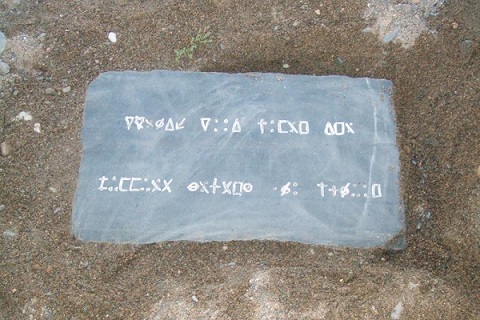
Both, were also found in underground chambers...makes you wonder if there is any connection between the two groups of people. I wonder if similar tablets have been unearthed in North America...something to do for the afternoon
Thanks for the great thread.
Awesome thread OP! I have never heard of the Gozel artifacts before, very Interesting and amazing! I know what I will be reading up on this afternoon.
Ever hear of the 'Money Pit' on Oak Island? I have been fascinated with it ever since I was a kid.
Oak Island, Money Pit, Wiki
There was a curious tablet found on site shortly after the pit was discovered. I couldn't help but notice some similarities in the cuneiform style of writing found on the Gozel tablets.

Both, were also found in underground chambers...makes you wonder if there is any connection between the two groups of people. I wonder if similar tablets have been unearthed in North America...something to do for the afternoon
Thanks for the great thread.
Looks a lot like Hungarian cuniform and the image of the stag goes right with it.
Some archaeologists dated the rune stones on a fantastic age (about 8000 BC). This was displayed by experts such as Dr. Lois Capitan as clumsy
forgery. The reason is that ca. 8000 BC no meaningful civilization could have existed
Actually, the statement above seems to explain the problem. They are not willing to think of any explanation if it doesn't fit what they think they already know.
If it doesn't fit, then it must be a hoax.
Very bad form on their parts!
Actually, the statement above seems to explain the problem. They are not willing to think of any explanation if it doesn't fit what they think they already know.
If it doesn't fit, then it must be a hoax.
Very bad form on their parts!
Read up a bit on this, interesting stuff. Could this been a well traveled settlement of Celts? The 8,000 age is surely off though.
reply to post by ArchaicDesigns
The Kensington Runestone was found in Minnesota, most believe it to be a modern forgery.
en.m.wikipedia.org...
The Kensington Runestone was found in Minnesota, most believe it to be a modern forgery.
en.m.wikipedia.org...
edit on 11-3-2013 by geldib because: (no reason given)
edit on 11-3-2013 by geldib because: (no reason
given)
edit on 11-3-2013 by geldib because: (no reason given)
edit on 11-3-2013 by geldib because: (no reason
given)
edit on 11-3-2013 by geldib because: (no reason given)
reply to post by isyeye
Thanks for sharing - another fascinating find that gets covered up. Perhaps I missed it but where are these artifacts now? If they've ended up in the Smithsonian Black Hole they'll never be seen again.
It's the same with many finds - they are suppressed by Main Stream Archaeology who don't want to look the fools when these anomalies prove their Books to be all wrong.
Here is a very interesting lecture with much evidence to support the 'Giant Finds'. Lots of reports in old articles and Newspapers about Giants who all share one thing in common 'double rows of teeth'. Lot's of finds that all ended up in the Smithsonian Black Hole and all appear to have been lost.
Thanks for sharing - another fascinating find that gets covered up. Perhaps I missed it but where are these artifacts now? If they've ended up in the Smithsonian Black Hole they'll never be seen again.
It's the same with many finds - they are suppressed by Main Stream Archaeology who don't want to look the fools when these anomalies prove their Books to be all wrong.
Here is a very interesting lecture with much evidence to support the 'Giant Finds'. Lots of reports in old articles and Newspapers about Giants who all share one thing in common 'double rows of teeth'. Lot's of finds that all ended up in the Smithsonian Black Hole and all appear to have been lost.
I'm in agreement with the others here. What Hoax? There was no fame, no money, no one said that the artifacts were older than written history, just
older than Gallo-Roman times. Ancient writing going back to prehistory has been dug up in Romania. The faces on some of the artifacts look like
genuine prehistoric carvings, as does the rock carving of the deer, which includes the throat mane much like an elk or red deer. Which would place it
within the time period anywhere between 30,000 years to about 3000 years ago. None of the artifacts are weird or odd or modern looking. The clay like
tablets seem to be similar to both the Sumerian and Minoan cultures. That is a common way of writing down something, like how many sheep you bought,
was to press a lump of clay flat into a tablet shape and press letters or numbers or symbols into it with a stylus or stick. It would be necessary to
find out if any of the artifacts are bone, ivory or fired clay. This could give better dates. But the symbols on the stones and tablets are pretty
common. They aren't arranged like true writing. One seems to be like a calendar, which typically start at the center and have symbols or signs which
spiral out. Too bad they trashed the wall! That would have given some evidence as well. Hand prints in clay are common. So what hoaxer would do all
this work and then not take credit and money for his find? Sounds like a find that really was just screwed up by pot-diggers and amateurs. It could
have been a pit-house dwelling (like the Picts lived in in Britain) that had been inhabited for many hundreds of years. Too bad it was so long ago.
Still if they could find bone they could carbon date, we'd get a better idea. There were some human bones, where did they go? Ah mystery!
reply to post by isyeye
i dont know what to think, but that deer etching looks way to good to mixed in with crappy runes.... is there anything else with "as good" art /etchings on them?
i dont know what to think, but that deer etching looks way to good to mixed in with crappy runes.... is there anything else with "as good" art /etchings on them?
reply to post by isyeye
There are some remarkable similarities to this mysterious and, as yet, still untranslated and explained artifact.


It was discussed at length on this earlier thread...to no avail.
Perhaps some fresh eyes and minds can make sense of it.
www.abovetopsecret.com...
There are some remarkable similarities to this mysterious and, as yet, still untranslated and explained artifact.


It was discussed at length on this earlier thread...to no avail.
Perhaps some fresh eyes and minds can make sense of it.
www.abovetopsecret.com...
reply to post by quedup
Thanks for sharing that TED talk! Great stuff, although I feel bad for that poor SOB. Following such an obviously covered up rabbit hole must have certainly destroyed any academic career he had or hoped for.
Thanks for sharing that TED talk! Great stuff, although I feel bad for that poor SOB. Following such an obviously covered up rabbit hole must have certainly destroyed any academic career he had or hoped for.
Originally posted by whisperindave
So what hoaxer would do all this work and then not take credit and money for his find? Sounds like a find that really was just screwed up by pot-diggers and amateurs. It could have been a pit-house dwelling (like the Picts lived in in Britain) that had been inhabited for many hundreds of years. Too bad it was so long ago. Still if they could find bone they could carbon date, we'd get a better idea. There were some human bones, where did they go? Ah mystery!
Who takes credit and money for crop circles? The motive need not be one of monetary gain or publicity...
On the other hand, this could be a genuine find...I would like to see more done by the archaelogical establishment
Originally posted by 00018GE
reply to post by IAMTAT
The bottom one is a recipe for bread.
LOL...I wish you were right. I have been so interested in actually finding someone who can translating this wonderful artifact.
So cool! I love this kind of thing. Can you imagine all the stuff that's probably buried on this mudball we have no idea it's there?
Also, I agree. Whenever we find things on earth that don't fall into the accepted model of history that the current scientists base their funding on it gets buried. Which sucks. And it's not real science.
Also, I agree. Whenever we find things on earth that don't fall into the accepted model of history that the current scientists base their funding on it gets buried. Which sucks. And it's not real science.
new topics
-
Tariffs all around, Except for ...
Predictions & Prophecies: 19 minutes ago -
Gen Flynn's Sister and her cohort blow the whistle on DHS/CBP involvement in child trafficking.
Whistle Blowers and Leaked Documents: 4 hours ago -
Anybody else using Pomodoro time management technique?
General Chit Chat: 7 hours ago -
Bucks County commissioners vote to count illegal ballots in Pennsylvania recount
2024 Elections: 9 hours ago -
Trump sues media outlets -- 10 Billion Dollar lawsuit
US Political Madness: 10 hours ago -
Fired fema employee speaks.
US Political Madness: 11 hours ago
top topics
-
Trump sues media outlets -- 10 Billion Dollar lawsuit
US Political Madness: 10 hours ago, 24 flags -
Bucks County commissioners vote to count illegal ballots in Pennsylvania recount
2024 Elections: 9 hours ago, 21 flags -
How long till it starts
US Political Madness: 12 hours ago, 17 flags -
USSS Agent Fired for Having Sex In Michelle Obama's Bathroom
Politicians & People: 14 hours ago, 10 flags -
Watching TV
Jokes, Puns, & Pranks: 16 hours ago, 9 flags -
Fired fema employee speaks.
US Political Madness: 11 hours ago, 9 flags -
Gen Flynn's Sister and her cohort blow the whistle on DHS/CBP involvement in child trafficking.
Whistle Blowers and Leaked Documents: 4 hours ago, 7 flags -
Anybody else using Pomodoro time management technique?
General Chit Chat: 7 hours ago, 3 flags -
Tariffs all around, Except for ...
Predictions & Prophecies: 19 minutes ago, 0 flags
active topics
-
Bucks County commissioners vote to count illegal ballots in Pennsylvania recount
2024 Elections • 19 • : theatreboy -
Tariffs all around, Except for ...
Predictions & Prophecies • 0 • : FullHeathen -
How long till it starts
US Political Madness • 17 • : WeMustCare -
USSS Agent Fired for Having Sex In Michelle Obama's Bathroom
Politicians & People • 24 • : rickymouse -
The Acronym Game .. Pt.4
General Chit Chat • 962 • : FullHeathen -
TRUMP Could Be Our Modern Day MOSES - The Similarities are Striking.
ATS Skunk Works • 246 • : WeMustCare -
Anybody else using Pomodoro time management technique?
General Chit Chat • 7 • : tamusan -
The Trump effect 6 days after 2024 election
2024 Elections • 141 • : cherokeetroy -
Thanksgiving 2024
Member Art • 19 • : rickymouse -
President-Elect Donald Trump will Meet with Coup-Victim JOE BIDEN on Wed 11.13.2024.
2024 Elections • 35 • : WeMustCare
